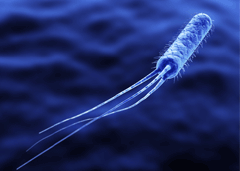FAQ
How effective is Titanium AOP on the various different types of water borne contaminates?
The use of Photo-Catalytic Oxidation and Hydroxyl Radicals is a unique killing mechanism that kills all carbon based matter equally well. Furthermore by breaking down pollutants and organic matter it delivers purer water and has a European wide reputation as both a water purifier.
What are the environmental benefits of fitting an AOP system?
- No chemicals are added to the water which reduces the risk of corrosion to pipework and valves.
- No storage and handling of chemicals on site and the associated COSHH requirements.
- Reduced maintenance and servicing requirements.
- Fail safe controls.
- Full WRAS approval for drinking water supplies.
- Low power consumption.
How can I be sure all the water passing through the AOP system is fully treated?
The system design incorporates a unique fully patented control system that has an individual control monitor for each UV Lamp. Each lamp has a warning that operates as soon as an individual lamp has a low UV intensity. It will then go into a state of alarm when intensity reduces further. As a second safeguard there is an overall system monitor that continually reads the intensity of the UV lamps at the reactor surface. This monitor operates with an additional warning and alarm display. If any of these warnings or alarms are activated or if power is switched off a signal can be sent to a remote monitoring panel.
What flow rates can be treated with a Titanium AOP system?
There are 7 units in the range that cover flow rates from 0.28 L/s up to 111 L/s. For higher flow rates units may be fitted in parallel.
Where should the Titanium system be installed?
Location is application specific. On commercial buildings the system is commonly fitted to the cold water mains to treat the entire water supply and thereby offering protection to the whole building’s water system.
What can I expect the Titanium AOP system to achieve that is different to a UV system?
Both systems disinfect the water in a safe and efficient way that is chemical free. The main differentiator is that the AOP gives a superior level of treatment than either UV or chemical systems. The level of treatment from using AOP results in organic matter and pollutants in the water being broken down to produce a much purer quality of water.
How long has the technology been used for purifying water?
The first systems were installed in Eastern Europe in the 1990’s with now many units installed all over the world including Sweden, Germany, France, Poland, China, Australia, the Middle East, America and more recently in the UK.
Is the AOP system suitable for drinking water and will the taste be altered in any way?
The system is well suited to drinking water supplies where it is important that the water is both contaminate free and of good taste. The system is chemical free and therefore does not alter the taste in any way. The breaking down of organic matter, microbiological material, water pollutants and pesticides that are present in water will make the water safer, purer and taste better. The system has also been tested and approved by WRAS (The Water Regulatory Advisory Scheme).
Is the AOP system suitable for other non-potable water treatment applications?
Yes the AOP system has many applications for purifying water including heating & chilled water system protection, cooling tower water treatment, humidifiers, bore hole water disinfection, rainwater harvesting, cleaning of process and manufacturing water supplies, food & beverage treatment and and hospital sterilisation.
What are the service and maintenance requirements for the AOP system?
Provided that good quality water is passing through the AOP system it will only require annual servicing. The UV lamps will need to be replaced annually and cost will therefore depend upon the size of the unit and hence the required number of UV lamps. If the water has high metallic content, contains high amounts of calcium carbonate or is at a high temperature the quartz tubes housing the UV lamps may need to be cleaned more frequently than just the annual service. Outside of the service cost power is also required to run the UV lamps.



